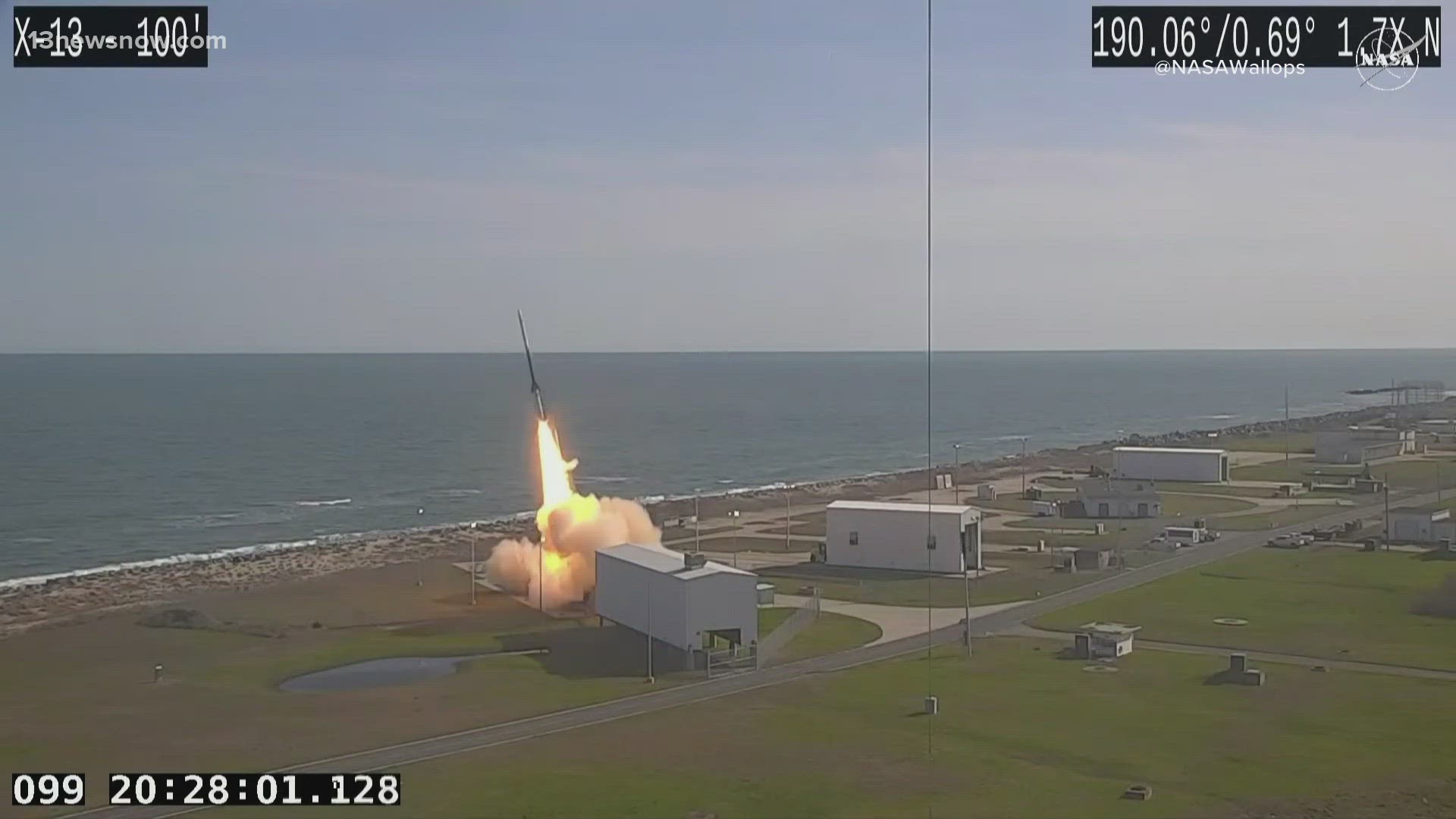WALLOPS ISLAND, Va. — Monday's solar eclipse presented a rare opportunity for NASA's Wallops Flight Facility on the Eastern Shore.
A team at Virginia's Wallops Island sent three sounding rockets into the ionosphere, the atmospheric layer nearly 100 miles above our heads that guides radio and satellite communications across the planet.
The big question they want answered: what happens to our environment when the moon blocks out the sun, even for just a couple of minutes?
"Why study the ionosphere? There’s still a lot of phenomena that are not fully understood, we have physics models and computer models, but you don’t get a lot of opportunity to study these regions," said Nathan Graves, one of the Embry-Riddle Aeronautical University students who assisted on the project.
"The data is only happening during an eclipse, but the interactions between the sun, atmosphere, and communications equipment is relevant all the time," said campaign manager Max King. "We can have a unique perspective to gather data and understand things during the eclipse, but that kind of information can be relevant all the time."
Monday's mission is the first time NASA has launched sounding rockets during an eclipse from Wallops Island since 1970.

